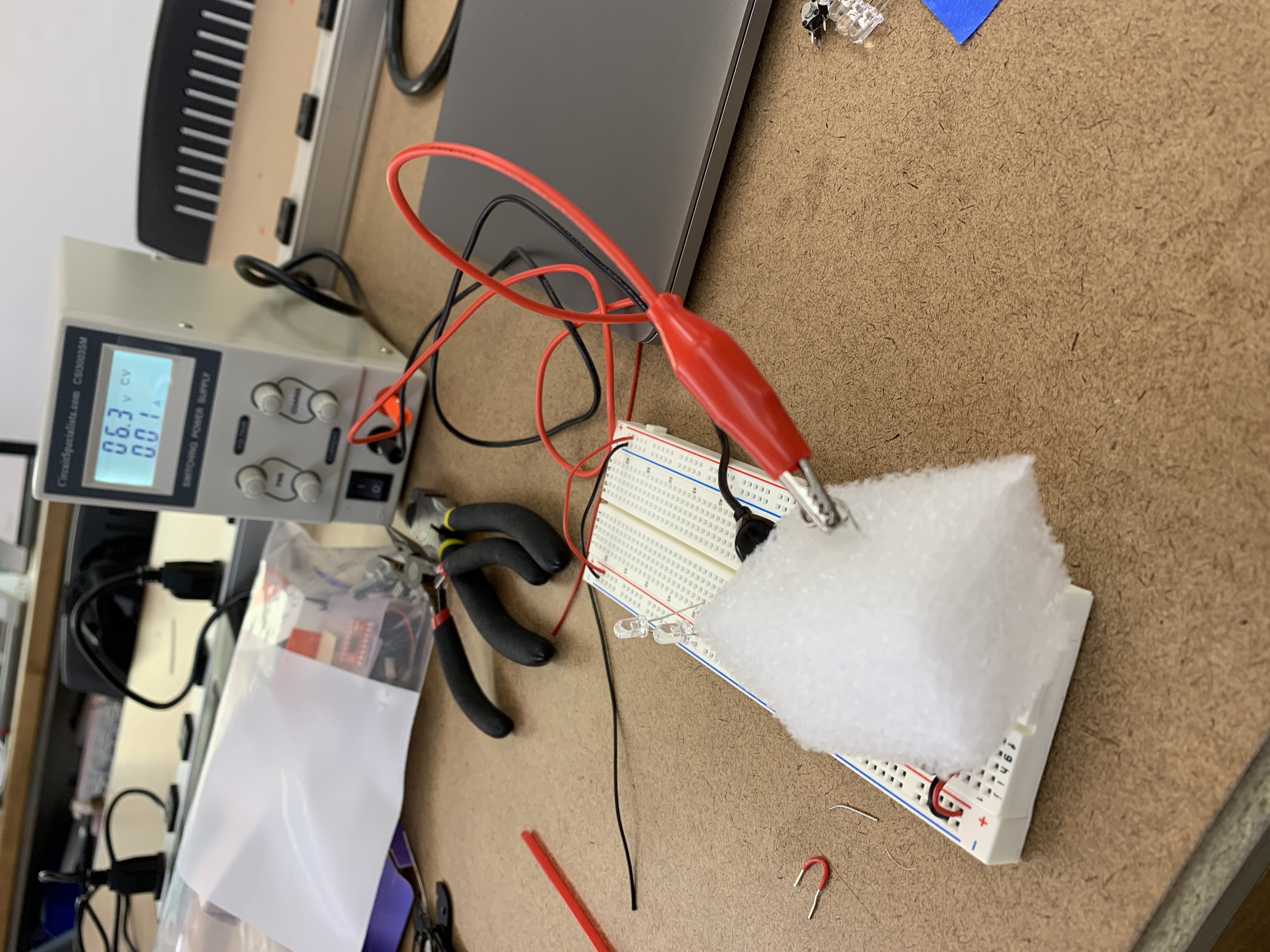After the first week was more or less an introduction, this week we got much more serious. It was still quite fun, though.
Initial testing
I initially started by following the syllabus. Instead of powering the circuit with an Arduino I used an external power source with adjustable voltage to power the circuit. Thanks to the help of my classmate Helen I managed to get everything up and running quite easily.

Once I finished using the normal switch, I started thinking of more creative ways to make a buttton. Here are two tests that didn’t work. The foam ensures that the current in the stripped wire doesn’t conduct. In the other example I was thinking of an plier, but because the metal in the plier already conducts, there was an constant current.


Eventually I came up with something simple using two straw rubbers. It gave me the idea to create a drum (see next paragraph for the final prototype).
Getting all the junk together to create an electronic drum
As I hate spending money I was happy that I found all of my components just laying around somewhere. The base (a paper tube) I found laying around on my street – it’s crazy what valuable stuff people just throw on the street. The lid is part of a preserved vegetables can that my housemate had laying around. The drum stick is basically a plastic straw that I found at the ITP kitchen and the knob of the stick is a coin that I found in my wallet. As I still haven’t figured out the exact montary value of all the US coins I felt happy that these coins are finally useful in my life.
One of the initial problems that I had was that the vegetables lid wasn’t conducting that well. As I was getting quite desperate I started talking with some of the perserved vegetable lid experts at ITP, and it turned out that there might be some special coating on the lid. So I sanddusted the devil out of it, and that way it became conductable.
As I still don’t know how to use all of the equipment that is around me (soldering, cutting things that can’t be cut with a stanley knife, 3d-printing etc.), I eventually went for a more primitive approach. I attached the wire to the lid with some insulator tape. The lid isn’t attached.